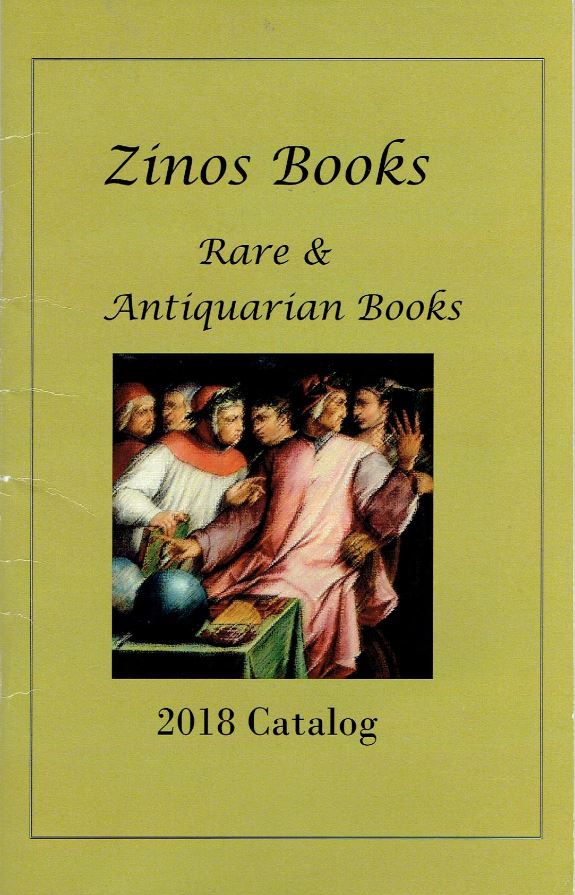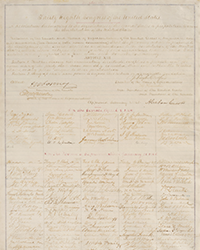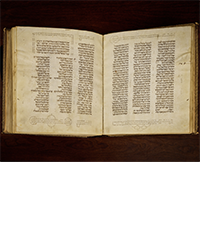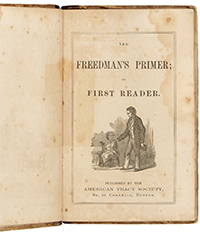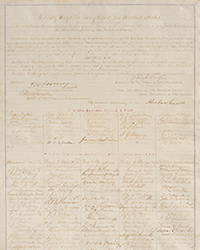Zinos Books recently published their first paper catalogue. While the catalogue is new, Zinos is not. Nicholas Zinos has been selling books and manuscripts from St. Paul, Minnesota, since 2004. However, the focus is not on the heartland, nor even America. Their selections are international in scope. This 2018 Catalog features European rare and antiquarian books. The catalogue is neatly laid out by centuries. They range from the 16th to the 21st. To be even more exact, the dates go from 1525-2011. What we find here are books that are rare and often noted for their beauty. I can also add that these are mostly titles you are not likely to find anywhere else. Here are a few samples of them.
We begin with a look at the city-state of Genoa in the early 16th century. The author was Agostino Giustiniani, a native of Genoa who became Bishop of Nebbio, on Corsica. Most of his writing was religious in nature and he was familiar with leading figures in the church. As best we can tell, he was not a particularly controversial figure, though he did manage to annoy Erasmus. However, this book seriously angered Christopher Columbus' son Ferdinand. Item 3 is his Castigatissimi Annali di Genova (Annals of Genoa), published in 1537. In it, Giustiniani describes Columbus' journeys and how they represent the fulfillment of biblical writings. He claims humble Genoan origins for the Columbus family. This did not sit well with Ferdinand Columbus. Ferdinand saw his family as aristocratic, attacking what he called the twelve lies of Giustiniani. Priced at $2,500.
Next we have Systeme des Contradictions Economiques or Philosophie de la Misere, by Pierre Joseph Proudhon, published in 1846. It is best known by the latter half of its title, the Philosophy of Poverty. It resulted in a strong attack from Karl Marx, cleverly titled the Poverty of Philosophy. Proudhon is seen by some as the father of anarchism. He believed labor was the source of economic value and was against private property and profits from capital. However, he also saw changes come through workers understanding the shortcomings of the current system, and thereby joining in voluntary economic collectives, avoiding government force. He foresaw this happening through their voluntary actions rather than violent revolution. While Marx was once an admirer of Proudhon's work, he found this one objectionable and attacked it savagely. I suspect you had to be there to fully understand the nature of Marx's displeasure. Item 51. $500.
This is one of those books that is noted for its beauty. It is L'Odyssee, Homer's Odyssey, an event from Greek legend dating back some three millennia. This edition dates only to 1930. While the 30 century age from the original spared Francois Louis Schmied from having to pay Homer copyright royalties, he still had to provide the artwork from scratch. That was Schmied's talent. He expanded from producing artwork to creating entire books. His specialty was to make lavish editions in very short print runs, for which he would gather a group of wealthy subscribers. The intention for this book was to print about 125 copies, but the costs were so great that it is believed that only around 73 copies were produced. Schmied traveled to Greece to study the lighting to get it just right for his images. Printing was done entirely on vellum, and it was said that 3,000 goats from the high mountains of Morocco gave their lives to make this production possible. Wood engraving was handled by Schmied's son, Theo. Item 60 is the first volume (of four) of the "c" copy, which was given to Theo Schmied. The book was published by the Compagnie des Bibliophiles de l'Automobile Club de France. That is something of a surprise to an American. I have long been a member of the AAA and they have never published anything like this, just some soft cover travel guides. It turns out that the French Automobile Club has a society of bibliophiles within it, which publishes such fine books, has an extensive library and other services. Automobile clubs in France are different. $7,500.
Item 61 is another Schmied production. This one is Faust, Goethe's classic, only a little over a century old when Schmied published his edition in 1938. Ward Ritchie called Faust "the most ambitious project that Schmied had undertaken to publish." Started in 1929, this one took longer. Schmied relied on people of substantial means to buy his books, the number of whom was seriously eroded by the Great Depression. This is another of his art deco masterpieces, number 79 of just 106 copies. It is signed in pencil. $5,000.
Next we have a defense of the indefensible, from William Cecil, who served in various high offices and was a most trusted advisor to Queen Elizabeth (not the current Queen Elizabeth, the original one). This pamphlet is titled A declaration of the fauourable dealing of her Majesties commissioners appointed for the examination of certain traitours and of tortures unjustly reported to be done upon them for matters of religion. It was published in 1583. That was a time of tortures of various Jesuits, which Cecil considered right and proper. In this polemic, he attacks the victims with all sorts of accusations amounting to treason, explaining why they got what they deserved. The pamphlet was published as England was getting a bad reputation as a result of its tortures, and Cecil wanted Europeans to know that it was only applied where necessary, and to those who did not properly recant. Jesuits such as St. Edmund Campion were placed on the rack, and later hanged, drawn and quartered. There was nothing unjust about this at all, in Cecil's opinion. This was not a high point in English history. Item 11. $5,000.
We will balance the previous item with a much happier day in Catholic history. Item 54 is The Solemn Blessing and Opening of the New Cathedral of St. Patrick, New York. St. Patrick's Cathedral in Manhattan is likely the most notable symbol of the Church in America. It is a magnificent structure, located across the street from Rockefeller Center. However, at the time it was completed, there was no Rockefeller Center and that part of town was hardly as developed as it is today. It was completed and officially opened in 1879. This pamphlet celebrates the opening, and includes a description of the building, a list of bishops and archbishops attending the celebration, the music and blessings given, and other details about the event. $300.
Zinos Books may be reached at 612-707-4804 or npzinos@yahoo.com.

